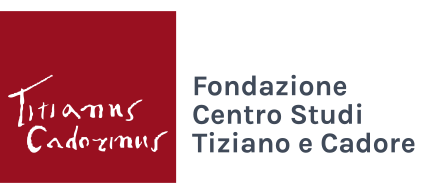Studi Tizianeschi V
Price: 20.00 €
On line price 18.00 €
Free delivery in Italy, payment on delivery abroad
The fifth issue of Studi Tizianeschi offers a series of items and reflections on Titian, which denote a vast variety of critical, methodological and, perhaps, generational perspectives, thus highlighting the vivaciousness of an international tradition of studies kept intact until today. The volume opens with a brief study of historiographic nature, in which David Rosand evokes the figures of Hans Tietze and Erica Tietze-Conrat, protagonists of the great Viennese school of art and distinguished scholars of Titian, albeit their having been unjustly overlooked in the research of the past decade. As proof of the value and modernity of Erica Tietze-Conrat’s research, an unpublished conference paper which she presented in 1954 at Columbia University in New York is published. It deals with a number of themes regarding the last period of the artist’s activities. The complete bibliography of the numerous writings on Venetian art by Tietze and Tieze-Conrat, has been compiled by Elena Vázquez. It covers a span of almost fifty years and lists publications that appeared mainly in journals or books that are difficult to access and are therefore little known.
A young scholar of Titian, the American Carolyn Smyth, is the author of a very circumstantial article of an iconological/contextual nature titled “Insiders and Outsiders: Titian, Pordenone and Broccardo Malchiostro’s Chapel in Treviso Cathedral”. It brings our attention to an altarpiece by Titian that is somewhat neglected in the Titian literature by considering it within the framework of the chapel to which it was destined – and where it is situated still today – and by analysing its relationship with the cycle of frescoes in Pordenone.
Andrew John Martin’s essay, on the other hand, reconsiders one of Titian’s most famous and debated portraits; that of Charles V (Alte Pinakothek, Munich), which is now attributed to Lambert Sustris. Martin argues that this reattribution is erroneous and places the work squarely in Titian’s ouvre with coherent reasoning of both a philological and contextual nature, that is based on a series of data and a original comparisons.
An accurate study by Elena Svalduz follows, which presents the results of her research on the painter’s house in Col di Manza, accompanied by a series of nice photographs of this evocative corner of the “Titian universe”.
Enrico Dal Pozzolo attributes a Last Supper (Alba collection, Madrid) to Titian. It was possible to admire this work of substantial quality in the recent exhibition Tiziano: L’ultimo atto (Belluno 2007). As well as providing ample documentation on the painting, Dal Pozzolo also discusses other unpublished Venetian works still in the great Madrid collection, the history of which – between the 18th and the 19th centuries – is illustrated in the appendix by compiled by Allegra Papa. The detailed technical analysis of Titian’s Last Supper is provided by Gianluca Poldi.
The very young French scholar Elisa de Halleux, a doctorate candidate in the History of Art at the Panthéon-Sorbonne I University of Paris, presents her first publication entitled “Vénus et Adonis”, in which she reflects on the calculated sexual ambiguity that pervades some of Titian’s late mythological works. In particular, she discusses the composition of the several known versions of the subject.
The session of papers ends with a brief note by Francis Russel, who shows how the stitching of the canvases of some of Titian’s works determines their composition layout.
Following the already proven scheme, the second section of this issue presents a series of reviews of recently published volumes on Titian and related themes. Michele di Monte, as always, is in charge of the column dedicated to the more interesting articles and papers on Titian published in periodicals and in the specialized international press. Lastly,
David Rosand provides an authoritative review of the two great Titian exhibitions of 2007, which took place in Vienna and Belluno respectively.

